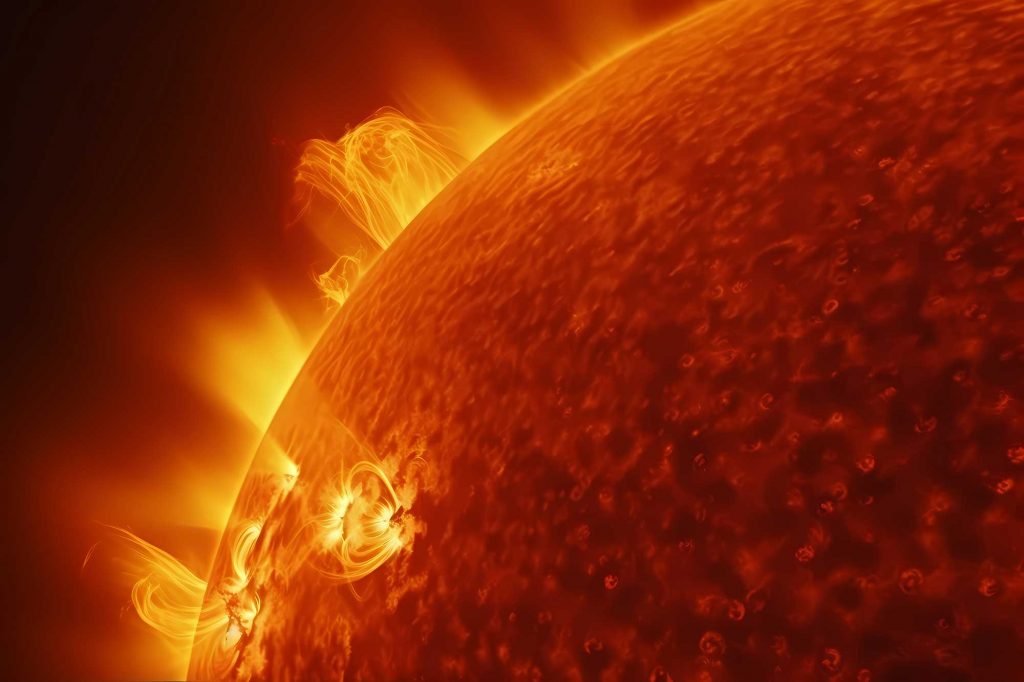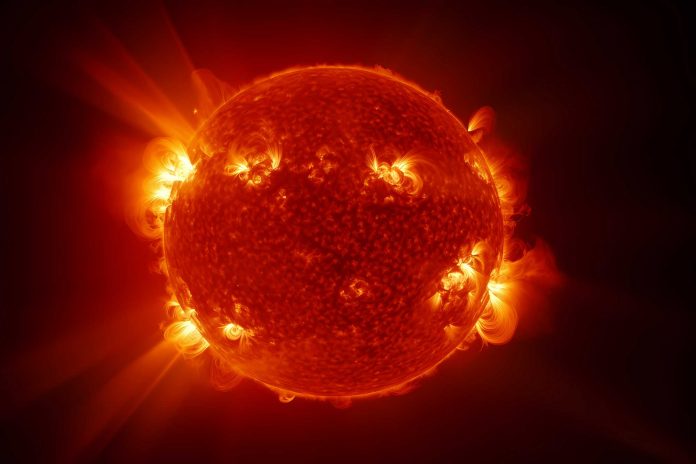On the afternoon of May 5th, the National Space Weather Monitoring and Early Warning Centre issued an alert regarding solar flares. At 14:01 Beijing time on May 5th, 2024, the Sun unleashed a powerful solar flare (X1.3 level) while China was experiencing daylight hours.
This flare affected the ionosphere above China, with predictions suggesting the possibility of further M-level or even X-level flares in the next few days.
Solar Flares: Unleashing the Sun’s Powerful Energy Bursts
Solar flares, as intense energy eruptions from the Sun’s surface, are categorized into five levels: A, B, C, M, and X. Among these, A represents the lowest energy level, while solar flares in May were of the maximum level, X.
The 25th solar cycle activity peak, occurring between January and October 2024, marks the “solar activity maximum period.” This signifies that the Sun will reach the pinnacle of its current activity cycle in 2024, which aligns with the timing of the solar cycle, which typically lasts around 11 years.
How Solar flares can disrupt communications

Ionospheric Disturbances: Solar flares can cause ionospheric disturbances, leading to fluctuations in the density and composition of the ionosphere. This can affect the propagation of radio waves, altering the transmission characteristics of communication signals.
Signal Degradation: Solar flare-induced ionospheric changes can cause signal degradation, leading to increased noise levels, signal fading, or loss of signal integrity.
Satellite Interference: Solar flares can produce energetic particles that can interfere with satellite electronics, leading to potential disruptions in satellite-based communication systems.
Previous Solar Flare Event
Previously, a coronal mass ejection (CME) caused by a very intense solar flare, cut out radio communications in China in February 2011.
It’s worth noting that on May 3rd at 10:22, a strong solar flare (X1.6 level) erupted, also affecting the ionosphere above China.
Understanding Solar Flares and Their Impact
According to Chen Anqin, Chief Forecaster at the National Space Weather Monitoring and Early Warning Centre, while the direct effects of solar flares may seem relatively minor, associated phenomena like coronal mass ejections can trigger geomagnetic storms, posing risks to power grids and satellite operations.
The Bright Side of Geomagnetic Storms
Despite the potential disruptions caused by geomagnetic storms, there are silver linings. These storms can lead to the captivating spectacle of auroras, visible even in regions further south than usual during particularly intense storms.
Here are some interesting facts about solar flares, that you probably didn’t know:
Solar flares are powerful radiation flashes caused by the release of magnetic energy, such as from a sunspot.
The term “solar storm” refers to a large-scale magnetic eruption, often causing a coronal mass ejection (CME) and associated solar flare, accelerating charged particles in the solar atmosphere to very high velocities.
Solar flares some of the greatest explosive events in our Solar System.
Solar flares can persist for a few minutes to several hours and are seen as bright spots on the Sun.
Particles (such as electrons, protons, and heavier particles) are accelerated by flares.
These eruptions, have an explosive force comparable to billions of nuclear bombs.
Large streams of charged plasma that are released during solar flares typically travel at speeds of several million miles per hour.
Satellites and electrical power networks may be affected by geomagnetic storms brought on by CMEs that strike the Earth.
According to some analysts, a significant solar storm could possibly produce more economic damage than the worst hurricane, by a factor of over 20.
Related article: Navigating Hainan Island’s Rainfall Risks: Understanding Mudslides and Flash Floods







